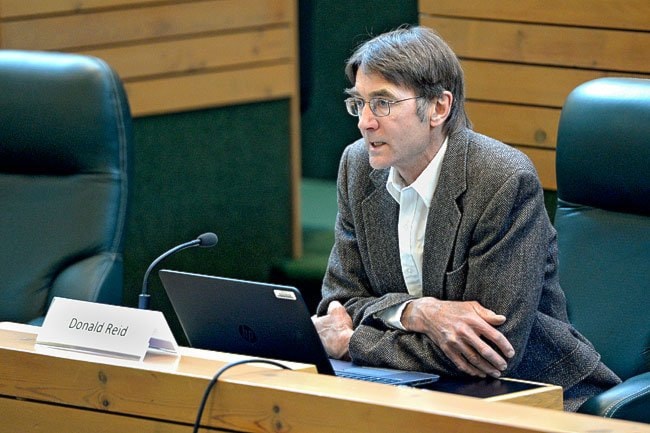Oil and gas development in the Yukon could be particularly risky for caribou herds, Yukon’s legislative committee on the risks and benefits of hydraulic fracturing heard this week.
Donald Reid, a Whitehorse-based biologist with the Wildlife Conservation Society of Canada, presented to the committee on Wednesday.
The cumulative effects of industrial development on wildlife populations are very hard to predict, said Reid.
But the caribou populations of the boreal forest from the east side of the Rockies to the east coast are well studied, and offer lessons that can be applied here.
Disturbances from oil and gas developments, such as roads and seismic lines cut through the landscape, decrease the amount of caribou habitat and also decrease its quality, Reid said.
But perhaps surprisingly, some species do better in disturbed environments, including deer and moose.
With lots of prey around, wolves do well. Wolves also benefit from the sight lines provided by roads and cut lines, because they make hunting easier.
All of these factors work together to decrease caribou populations, who are pushed out by deer and moose and preyed upon by wolves.
For boreal caribou, “the net effect of that on caribou has been a declining caribou population in most of the herds that have a heavy level of disturbance,” said Reid.
“Some populations of caribou have disappeared as a result of this. Many are on the cusp, which is why there has been so much controversy in northern Alberta, and which is why the six populations of boreal caribou in northeast British Columbia, in the Peace River country, are currently on the decline and considered at real risk of extirpation.”
Darius Elias, committee member and MLA for Vuntut Gwitchin, asked Reid if the thresholds set out in the North Yukon Regional Land Use Plan might be the appropriate measure to ensure that caribou habitat is not disturbed to an unacceptable level.
Reid responded that having disturbance thresholds is the right idea, but that we have no way of knowing what the appropriate thresholds would be in the Yukon. That’s because the caribou populations here interact with the landscape in a different way from those in the boreal forest.
There are other potential risks to wildlife that could result from large-scale oil and gas development in the Yukon, said Reid.
One risk is the amount of water taken from local lakes, rivers and streams.
With low-flow levels in the winter months, “we run a risk of over-winter habitat loss for invertebrates and fish populations if we’re not very careful,” he said.
Another risk is air pollution from toxic gases released from underground, or evaporated from fracking fluids, said Reid.
Of particular concern are ozone and hydrogen sulfide, because they are heavier than air and can pool in valleys, he said.
“The sinking and accumulation of these gases in certain circumstances could be lethal.”
These risks can be mitigated with appropriate management and regulations, said Reid.
But there is one area of risk that we simply do not know enough about to mitigate confidently, he said.
That is the potential for fracking fluids left underground in wells to migrate into surface waters.
He pointed to a recent Council of Canadian Academies report that found that potential migration pathways are real and probably have been underestimated.
“Many of the claims of industry have probably been over the top with regard to this water pollution issue and what happens to the water underground,” said Reid.
“Our real dearth of knowledge on how fracturing fluid water works underground in different geologies and with different aquifer and groundwater situations is really creating a huge problem for us, I think, in terms of being able to quantify risk, understand exactly where the risk is coming from, and therefore have any idea about how to regulate it or even monitor it.”
Because we know so little, the lesson is to go slow, and closely monitor effects on ecologies and wildlife, said Reid.
“We need to think about anything we do on the land base as an experiment, not as something that we are walking into with the hubris of knowing exactly what’s going to happen,” he said.
“Unless we learn from anything we do, we are going to be making big mistakes.”
Contact Jacqueline Ronson at
jronson@yukon-news.com
